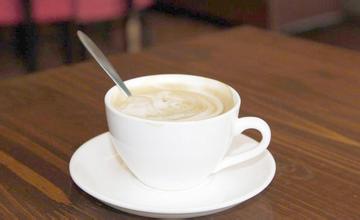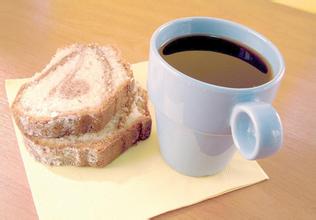Rich aroma of Indonesian Java coffee flavor taste manor characteristics of boutique coffee beans
Java coffee is famous in the early years, which refers to Arabica coffee formerly grown on the island of Java. It has a strong aroma, low acidity, taste lubrication, mixed with mocha coffee, the resulting "Java mocha mixed coffee" was once popular and became synonymous with top coffee.
At that time, Java coffee sold to Europe was a very special kind of coffee. At that time, it was shipped to Europe and the United States by sailboat, and the distance was long and the speed was slow, so it took a lot of time to transport. In this case, the coffee seems to have undergone a special fermentation and has a very unique taste.
High quality Java coffee
High quality Java coffee
Later, when the ship replaced the sailboat, due to the shortened delivery time, people drank relatively fresh coffee beans. But people who are used to drinking Chen beans are not used to the fresh taste, so they desperately pursue old Java coffee, so that the Indonesian government and some businessmen deliberately store fresh beans in warehouses for one or two years and then sell them to consumers. In fact, compared with fresh beans, the acidity of aged Java beans is close to zero, but the flavor is more intense. Because of the long storage time, the increase in cost and the limited quantity, Java has always been a hot item in the coffee market. In the 1880s, some profiteers deliberately tampered with some fresh Guatemalan or Venezuelan beans to mimic the high prices of old Java. It is intolerable that profiteers dye coffee beans to make them look more like old Java, but there is no doubt that the dyed chemicals are certainly toxic.
Java produces only a small amount of Arabica beans, most of which were imported from Africa after the rust disaster. The roasted coffee is bittersweet but extremely mild in flavor. although it has low acidity and delicate taste, it is rarely used for direct drinking, is often used to mix mixed coffee, or to make instant coffee. Indonesia (Indonesia) was the first colony (Dutch) to plant coffee trees. Indonesia's archipelago is the world's largest producer of Robusta beans. This is called high-quality Arabica beans, such as Java and Sumatra.
Java: coffee beans-Robusta
Sumatra (Sumatra): coffee bean seed-Arabica
The history of Java coffee (java Java coffee)
The Dutch first spread coffee to Central and South America in the 1820s. Coffee spread from Dutch colonies to French Guiana and Brazil. during their colonization, the Dutch grew coffee in Malaba, India, and brought it to what is now Batavia in Indonesia-Java in 1699. The Dutch colonies once became the main supplier of coffee in Europe. At present, Indonesia is the fourth largest coffee exporter in the world.
Later, it was brought to Jamaica by the British. By 1925, growing coffee had become a tradition in Central and South America. In the same year, Hawaii also began to grow coffee, which is the only coffee producer in the United States, and Hawaiian coffee is one of the best coffee in the world.
At present, 90% of the coffee beans exported from Indonesia are Robusta beans, and only 10% are Arabica. Before 1920, due to a major environmental disaster, Indonesian coffee varieties were replaced with Robusta beans, so Mandarin coffee in Sumatra is a rare Arabica bean, a treasure before it was discovered in the Blue Mountains. The output of such authentic products is very small.
The best coffee beans come from Kalossi and Rantepao in the southern part of the island. Among the many tastes of spleen, try Celebes Kalosi coffee.
On the whole, Indonesian coffee has a strong flavor, mellow taste, slightly syrup flavor and excellent acidity, and its two main export markets are Germany and Japan, which reflects the excellent quality of the coffee. What attracts consumers is the unique quality of its Arabica coffee beans. You can add milk or cream to high-quality Indonesian coffee without worrying about affecting its taste. Indonesian coffee is divided into six grades, the best of which is AP. But no one knows exactly what these two capital letters stand for.
When ships replaced sailboats, coffee produced on these islands faced the same problem as Indian coffee from Mysore-that is, consumers were so used to coffee affected by long-distance travel that they were reluctant to accept the taste of this "fresh" coffee. To solve this problem, the Indonesian government has tried its best to copy coffee affected by long-distance travel, and they have "stored" coffee beans for up to a year. However, what is not satisfactory is that the taste of this wetted coffee is not so widely accepted that it affects the good reputation of its coffee.
However, Indonesia's "stored" coffee, or "journey" coffee, is still produced today. Its sales brands are generally "OldGovernment", "OldBrown" and "OolJava"

Important Notice :
前街咖啡 FrontStreet Coffee has moved to new addredd:
FrontStreet Coffee Address: 315,Donghua East Road,GuangZhou
Tel:020 38364473
- Prev

The taste of Costa Rican coffee is mellow. Introduction to the characteristics of high-quality coffee beans in the manor area.
One of the most famous is Mountain Costa Rica Coffee, which tastes mellow and neutral. It can be boiled directly or mixed with other kinds of coffee beans to form a mixed coffee. It is also a good choice. Excellent Costa Rican coffee is called extra hard beans, and this kind of coffee can grow at an altitude of more than 1500 meters. Altitude has always been a problem for coffee growers. The higher the altitude
- Next

Introduction to the characteristics of high-quality coffee beans in the manor area
Flavor: [dry] black cherry, melon, brown sugar [wet] fruit, light wood, almond, cocoa [sips] round taste, the entrance is the first to show sweetness, with unique and clear aromas of flowers and fruits, impressive vanilla aromas, complex nuts and soft acidity, obvious BOBY consistency, caramel cinnamon, when the temperature decreases, and a little bit.
Related
- Detailed explanation of Jadeite planting Land in Panamanian Jadeite Manor introduction to the grading system of Jadeite competitive bidding, Red bid, Green bid and Rose Summer
- Story of Coffee planting in Brenka region of Costa Rica Stonehenge Manor anaerobic heavy honey treatment of flavor mouth
- What's on the barrel of Blue Mountain Coffee beans?
- Can American coffee also pull flowers? How to use hot American style to pull out a good-looking pattern?
- Can you make a cold extract with coffee beans? What is the right proportion for cold-extracted coffee formula?
- Indonesian PWN Gold Mandrine Coffee Origin Features Flavor How to Chong? Mandolin coffee is American.
- A brief introduction to the flavor characteristics of Brazilian yellow bourbon coffee beans
- What is the effect of different water quality on the flavor of cold-extracted coffee? What kind of water is best for brewing coffee?
- Why do you think of Rose Summer whenever you mention Panamanian coffee?
- Introduction to the characteristics of authentic blue mountain coffee bean producing areas? What is the CIB Coffee Authority in Jamaica?

